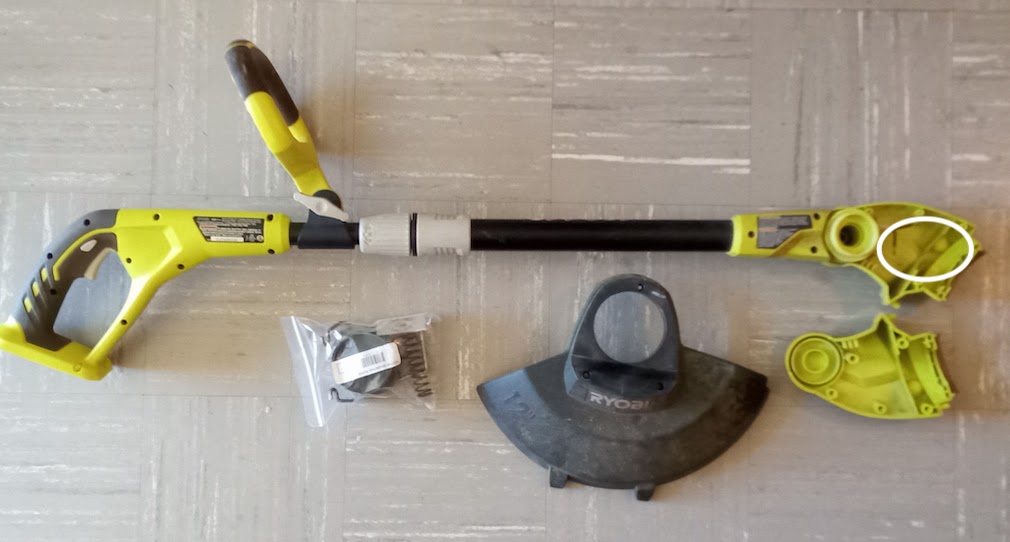The majority of people and pundits claim to be in favor of sustainability. But what is it, really? I’ve written on it before. One of the key aspects is repairability. Repairability implies modularity. It also implies a bit of design, and the availability of parts.
Look at the desktop PC. Until recently almost all desktop PCs were made with interchangeable parts. You could (and many geeks did) buy a cabinet, a power supply, a motherboard, CPU, memory, a disk drive, and a monitor. Assemble it and it works. Many computer Gamers still do this!
If any of those components fails, just replace that part. When the CPU gets too slow, buy a new motherboard, CPU and memory. If you need more disk, buy a bigger disk or add a second one - there’s room inside for it! You have to choose a CPU (brand and speed) and that narrows your selection of motherboard, but otherwise you could buy any brand of any component and expect it to "just work". I have a desktop PC that is about twenty years old, and it’s on its third (at least) motherboard and third or fifth power supply, and it’s still running fine.
But recently, some of the bigger names - names like HP and Dell - have been making smaller and smaller desktop PCs, and in the process trading sustainability for short-term profits.
In days of yore, by which I mean, in western society in the post-World-War-II era, America and Europe manufactured most of their own consumer goods including what were called "durables", meaning things like electrical appliances. It was not uncommon for kids growing up in that era for their parents to have the same kettle, the same fridge, the same oven, from the kids' earliest memories until they went off to college. Nor uncommon to see the parents repairing these, or calling in a qualified repair person. I remember my dad repairing the timer mechanism on a washing machine - it was all gears and cams and a motor, and you could see how it worked, and what was wrong with it. Even today we have a mixer/blender set that belonged to my in-laws, and it was old when they were killed in a car crash… decades ago. And it still works. A new kettle from that same brand in this decade lasted under a year. And its warranty replacement lasted no longer!
There used to be "TV repair shops" and "Appliance repair shops" where you could take almost anything electrical and get it repaired. This was considered an honorable profession: keeping things working. Today, the same name brands that used to provide quality, long-lasting durables have been pimped off to importers who in many cases buy the cheapest possible goods from Asia and slap the honored name brand on the box.
"For want of a nail…"
And then there’s Ryobi, makers of electric (and gasoline-powered) yard tools. We had really good service out of a Ryobi electric string trimmer, model P2005 (note that some Ryobi products are sold as Homelite in the US, with the same part numbers). The trimmer was approaching a decade in age when the motor burned up in normal service. I mean literally - there was smoke coming out of it, and the smell of burnt plastic. Ick.
OK, no worries. Head over to Ryobi’s web site for Canada.
Find that their parts deparement has been outsourced to an outfit named ordertree.com.
OK. Search that site for P2005, and sure enough, it pops up.
https://ryobipower.ordertree.com/catalog/partslist/group/group_id/100772/.
Select Parts Diagram. Strange: there is no motor even listed!
Confirmed with a phone call: there is no replacement motor available.
|
|
The parts shown in the left side picture are mostly headed for landfill as they aren’t recyclable. All for want of the tiny motor (shown several times actual size) in the right hand picture; it fits in the cavity that’s circled (ovalled?) in white (see Wikipedia for the "want of a nail" proverb).
Well, after ten years, maybe it’s time for an upgrade. Buy a new one (still a Ryobi so we can use the same battery packs and chargers). Assemble it and it works. While we’re thinking about it, check back on the parts site. https://ryobipower.ordertree.com/catalog/partslist/view/group_id/459289/?assembly=FIGURE%2BB&assembly_id=72161 When this site is working, it admits that the unit has a motor, and a part number. But guess what? "Product not available." They sell labels, and screws/bolts, and various large parts, but no motor. Maybe it’s because it’s a relatively new product, but maybe it’s just because… they want you to buy a whole new trimmer when a $20 motor dies. I’m uncertain; they do sell motors for some other models of string trimmers. What’s the deal, Ryobi?
So. Sustainability or not? Each manufacturer that wants to claim the "sustainable" or "eco-friendly" label has to make a decision to make critical repair parts, and documentation, available. Companies like FairPhone and Teracube in smartphones, and Framework in laptops have done so. Unfortunately, not enough other companies have. Acer, Asus, Apple, Dell, Samsung - where are your repair manuals? Your spare parts sites?

